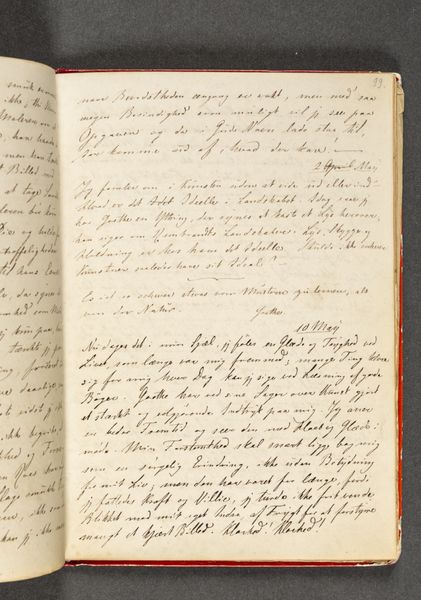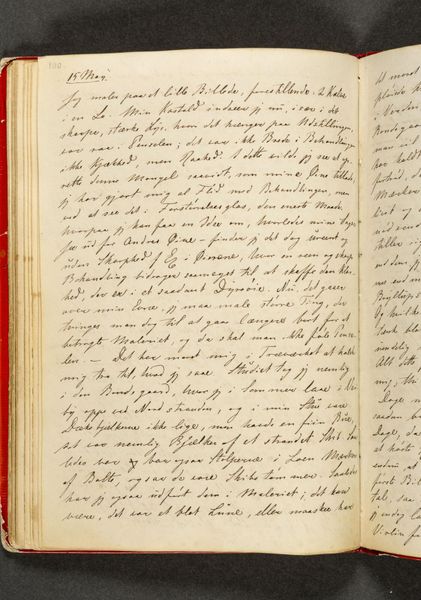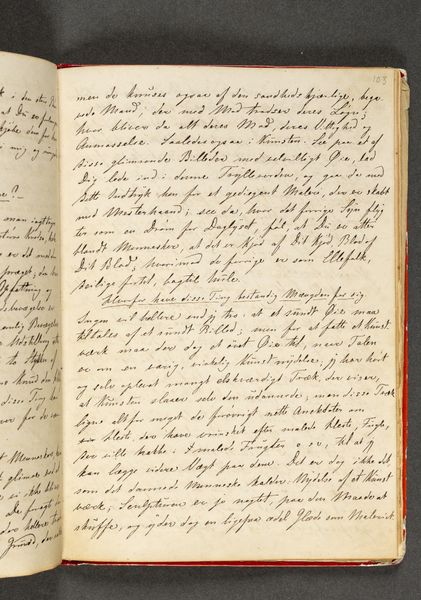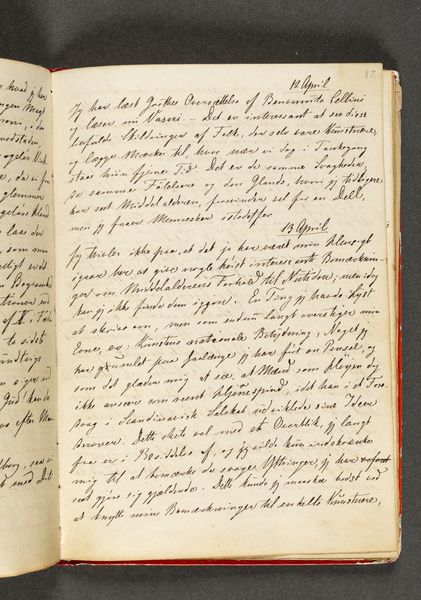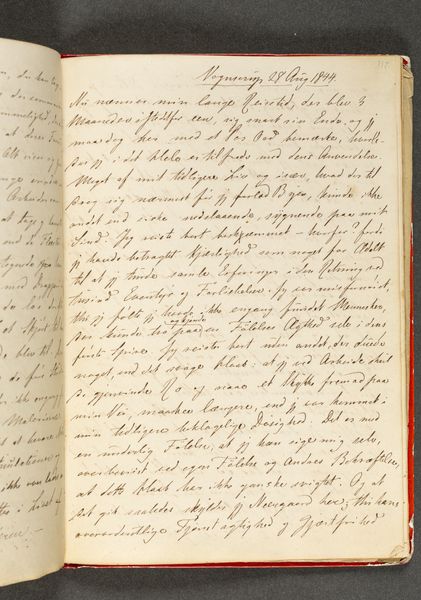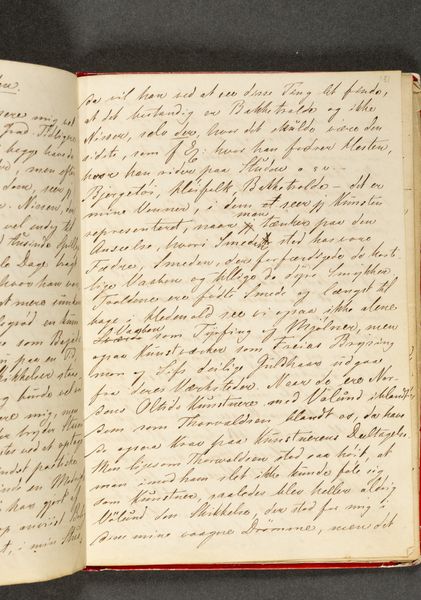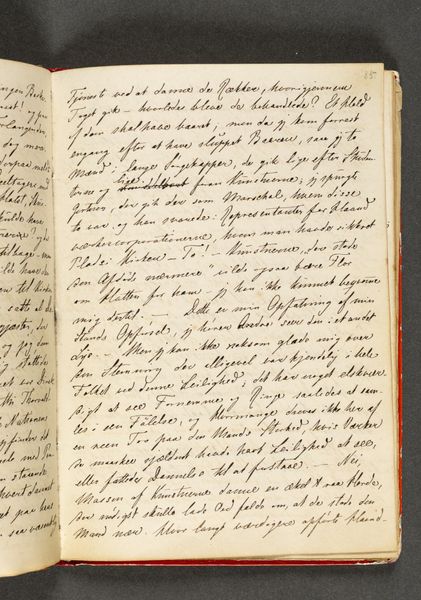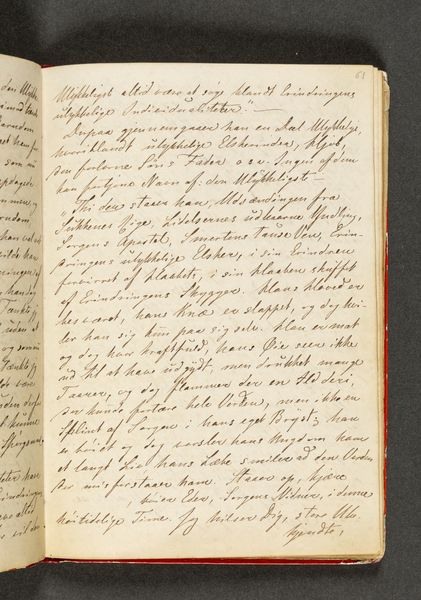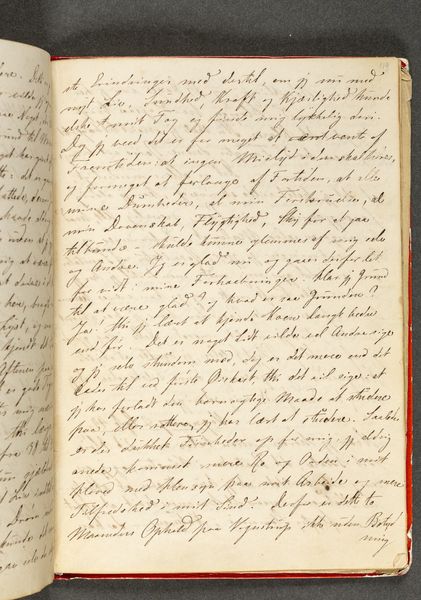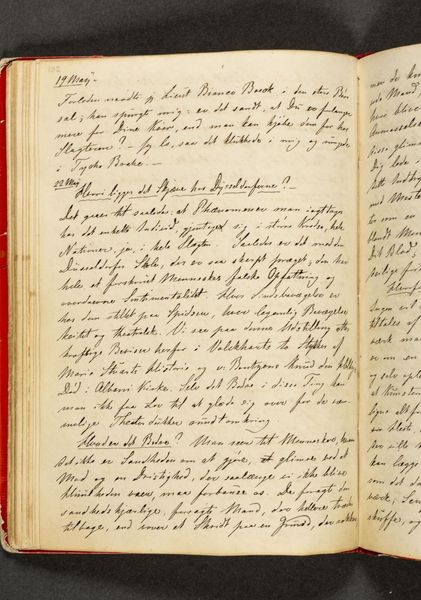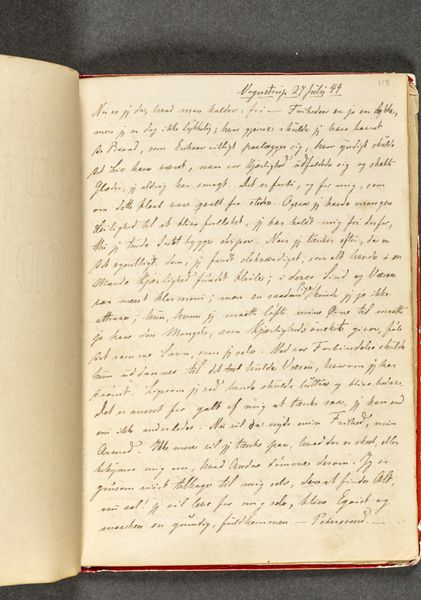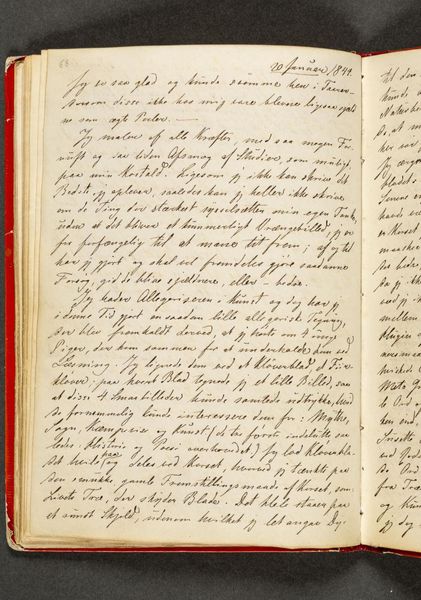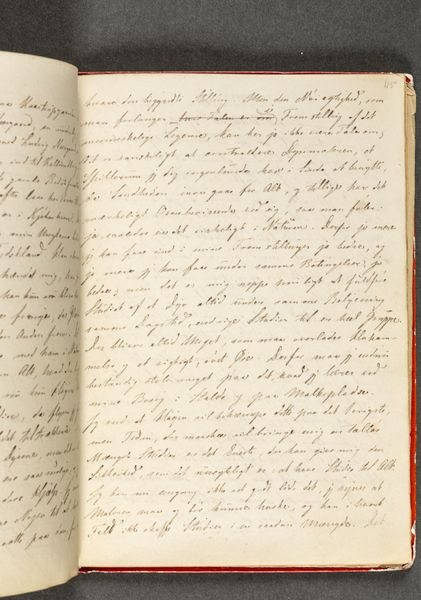
drawing, textile, paper, ink
#
drawing
#
textile
#
paper
#
ink
#
romanticism
Dimensions: 192 mm (height) x 133 mm (width) (bladmaal)
Curator: Today we're looking at "Dagbog. Side 97," a page from a diary created by Johan Thomas Lundbye in 1844. The piece resides in the collection of the SMK, the National Gallery of Denmark. Editor: It looks quite aged. There's a fragility to it, likely from being handled and stored over the years. The handwritten text also evokes a sense of intimacy; it's someone's personal thoughts and reflections committed to paper with ink. Curator: Precisely. Lundbye was deeply involved in the Danish Golden Age movement, which emphasized national identity through art and culture. Keeping a diary, therefore, served as a means of documenting personal and cultural experiences. We see diary pages as cultural objects as much as private expression. Editor: I agree. And, it really makes you consider the physical process. What kind of paper did Lundbye have access to? What was the quality of the ink? Were these materials precious, shaping the length of his entries? There is an art, so to speak, to the art supplies used. Curator: Certainly. These journals were quite commonplace among bourgeois artists and intellectuals. Access to materials like paper and ink became increasingly democratized, encouraging writing and drawing as both pastimes and forms of self-expression. The journal offered a private space. Editor: But also a site of production. The way the ink bleeds into the paper in places tells a story of its materiality—its texture and how it responded to the artist’s hand. Did he press hard or was it a more deliberate, lighter touch? Curator: And how does his location matter? We know Lundbye kept these journals while travelling. We must consider his movements at this moment and how the physical surroundings bled into this act of transcription, both visibly and emotionally. Editor: This changes the page from solely a document into a record of time, place, and even movement. So even within its apparent simplicity, this single diary page offers a deep understanding of 19th-century artistic life. Curator: Absolutely. Analyzing the historical context around this intimate diary page offers a look into broader issues of nationalism, artistic expression, and daily life during the Danish Golden Age.
Comments
No comments
Be the first to comment and join the conversation on the ultimate creative platform.
